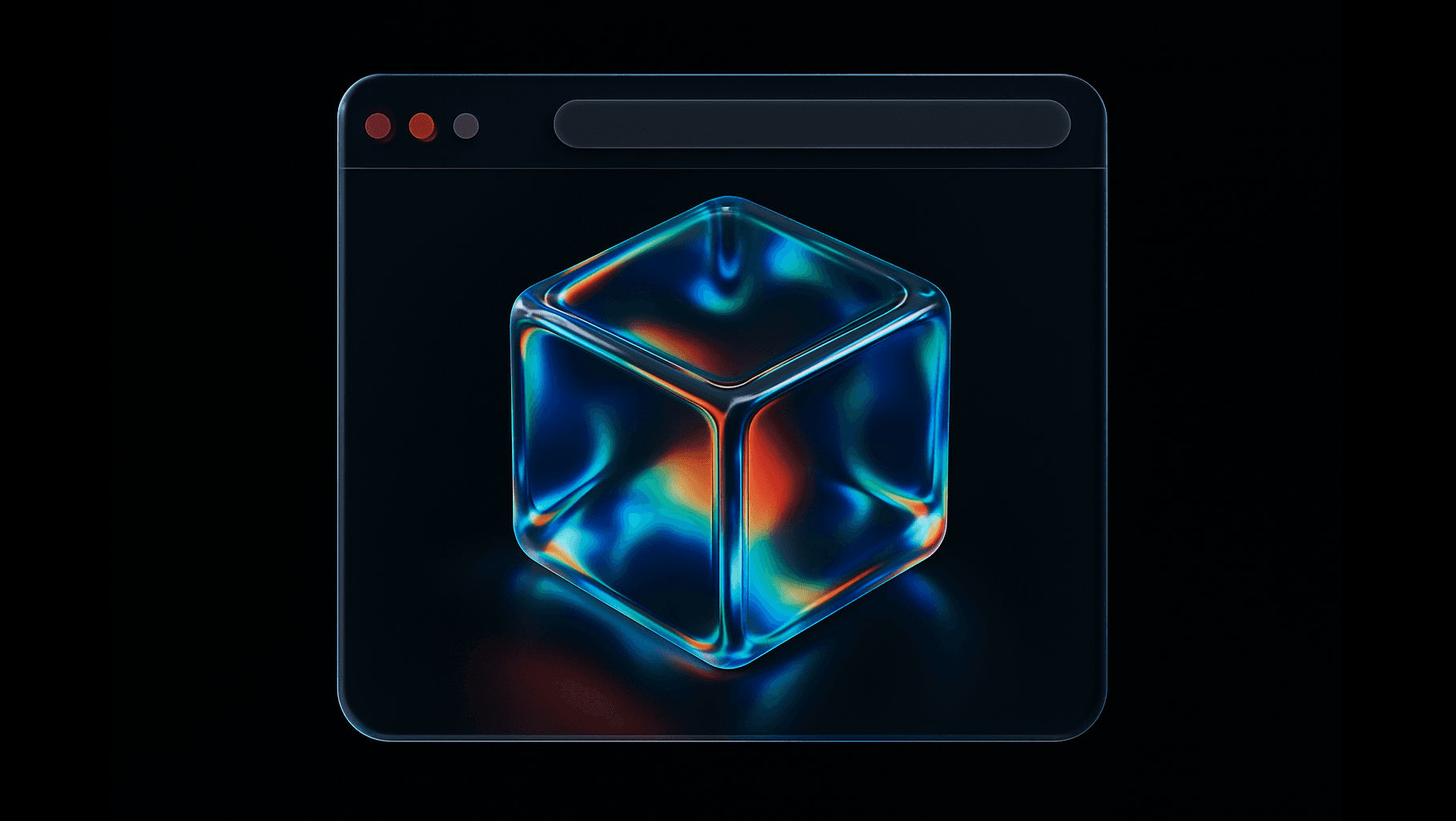How 3D Web Experiences Drive Engagement and Sales


Why visitors leave so quickly
Most people decide whether to stay on a page in 15 seconds or less. Static images and long text rarely answer two silent questions:
- Does this solve my problem?
- Can I trust what I’m seeing?
Interactive 3D turns passive scrolling into active exploration, giving you extra time to persuade and convert.
What changed: browser-native 3D in 2025
Modern standards—WebGL, WebGPU and WebXR—let real-time 3D run in any mainstream browser. A visitor clicks a link (or scans a QR code) and the scene loads; no plug-ins, no app-store friction.
- In 2025 WebGPU shipped by default in Chrome, Safari and Firefox, bringing roughly 3 × the draw-call budget of classic WebGL.
- That jump enables photoreal product configurators, virtual showrooms and smooth in-browser VR even on mid-range phones.
What the numbers say
Recent studies show consistent gains:
- Product pages with a true-to-scale 3D or AR model record +94 % conversion.
- Full 3D configurators often bring 35 – 40 % more enquiries or check-outs.
- Retailers using WebAR report 25 – 40 % fewer returns because buyers see size and detail before purchase.
- VR training modules boost knowledge retention by 70 – 85 % compared with slide decks and video.
Four quick examples
Virtual real-estate tours — overseas buyers walk through a Dubai development, reserve units and pay in crypto.
Photoreal car configurator — shoppers colour-swap, rotate and explore interiors; test-drive bookings rise 35 %.
Web-VR safety training — employees practise extinguisher drills online, pass rates soar and travel costs fall.
Interactive museum exhibit — a 7th-century fortress reconstructed online lets students worldwide “visit” history.
Why 3D web works

- Hands-on control makes the experience feel like a demo, not an advert.
- Visual honesty (true scale, real materials) aligns expectations and reduces returns.
- Zero-friction entry keeps users who would quit at an app-download gate.
- Actionable analytics capture each rotation, click and dwell for product and marketing teams.
Implementation checklist
- Optimise models: export to glTF, compress with Draco, target a sub-5 MB initial payload.
- Use adaptive levels of detail and stream heavy textures only when the camera moves close.
- Host assets on a global CDN to keep load times under two seconds worldwide.
- Offer a fallback static image or video for legacy browsers instead of blocking them.
- Track core events such as config-complete or AR-view-start in GA4 or Segment.
- Serve over HTTPS and enable COOP/COEP headers for WebGPU security.
Budget and ROI ranges
In e-commerce a browser-based 3D viewer or configurator typically pays for itself within 3 – 6 months through higher sales and lower returns. For high-ticket B2B and real estate, one extra deal can cover development. Long-term gains include lower customer-acquisition cost, deeper brand recall and richer first-party data.
Next steps
- Book a 30-minute discovery call — clarify goals, pain-points and audience.
- Get a free opportunity memo — two concept sketches plus projected KPIs.
- See a clickable proof-of-concept — we can ship a slim demo in about two weeks.
Questions or project ideas?
hello@lbproject.xyz
lbproject.xyz
Lb project helps companies explain better, sell faster and train smarter — directly in the browser, on any device, without plugins or apps.

Andrey Malyshev
Founder of Lb project